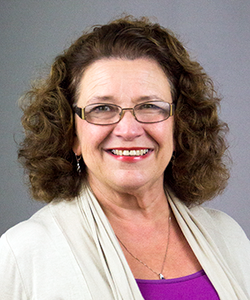 |
By Nila Cobb.
This is the second part of a two-part question-and-answer session with Nila Cobb, healthy lifestyles specialist and assistant director of the West Virginia Statewide Afterschool Network. You can read part one here. In the second part, Nila describes the challenges and strategies she’s faced while responding to the opioid crisis and offers practical advice for afterschool programs.
How did you go about educating yourself about different potential approaches to the opioid issue? What are some of the conclusions you’ve drawn?
I’ve spent many hours researching scholarly books and articles. I’ve personally interviewed the front line afterschool providers and sought input from the West Virginia Statewide Afterschool Network. I’m currently working with a Learning Community from several other state afterschool networks facilitated through the National Afterschool Network with support of the C. W. Mott Foundation focused on the Drug Epidemic and the Role of Afterschool. I’ve reached out to interagency groups in Huntington, W.V. such as Healthy Connections.
Further, I have implemented a mentoring program with support from the National 4-H Council and the Office of Juvenile Justice and Delinquency Prevention for eight years in Huntington, W.V., where our most affected youth reside.
My conclusion is that help is slowly on the way. Many people are ready, willing, and able to help, but are unsure of how to proceed. It is no longer just a problem of the poor and depressed in West Virginia, but a national crisis. More work must be done right away to impact policy and provide the appropriate level of funding for quality afterschool programs to reach all of our children with the greatest need.
How have you implemented your program thus far, and what are some next steps you have in mind?
One of the greatest needs is for quality training programs that can be affordable and available nation-wide, and relevant to the afterschool environment. This is my current work.
We are dealing with hurting children. Often, this hurt manifests in acting out behaviors. Instead of denying access to a child, or reacting in ways that increases the child’s traumatic stress, workers and providers and youth serving agencies need to be retrained to see their own place in the healing process.
We also need to be more proactive on resourcing referrals for families that are in need of the very basics of food and clothing, shelter.
What’s the greatest challenge you’re facing when it comes to your efforts combating the opioid crisis with afterschool? What are some of the successes you’ve seen?
Many children in these situations are very transient. Front line workers reported that they are starting to make progress with children in their afterschool program, only to have the children suddenly disappear without any way to know where they’ve gone. Interagency communication could assist with providing children a connection for a continuum of care. This could work for the most vulnerable, who are frequently falling through the gaps in services.
Through the mentoring program, I’ve seen many success stories where children gain relationships with a caring adult, one of the hallmarks of building a child’s assets.
I’ve also witnessed youth and staff utilize resources and training all across West Virginia, with prevention and health materials delivered through programs such as 4-H Health Rocks!, supported by Altria and 4-H Healthy Habits. These programs can use a teens-as-teachers approach that is very popular and effective delivery method for afterschool.
If you could give advice to advocates in states who are also particularly hard hit by the crisis?
Advocate and work together to impact policy for more comprehensive interagency work with programs such as Handle with Care. Handle with Care provides the school or child care agency with a “heads-up” when a child has been identified at the scene of a traumatic event. It could be a meth lab explosion, a domestic violence situation, a shooting in the neighborhood, witnessing a malicious wounding, a drug raid at the home, etc. Police are trained to identify children at the scene, find out where they go to school or daycare, and send the school/agency a confidential email or fax that simply says, “Handle Johnny with care.” That’s it. No other details.
Training for staff to understand the impact of trauma and how afterschool can help resolve trauma-related issues is imperative. Continue to seek trainings that are relevant to the afterschool child- and age-appropriate model in Trauma Informed Care.
With appropriate supports and intervention, people can overcome traumatic experiences. Afterschool is perfectly situated to work within the community to help with the recovery efforts for our youth to enjoy a future of prosperity.
Comments are closed.